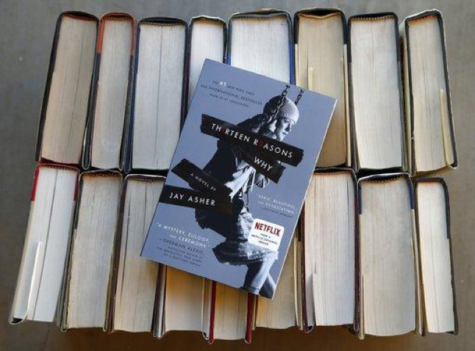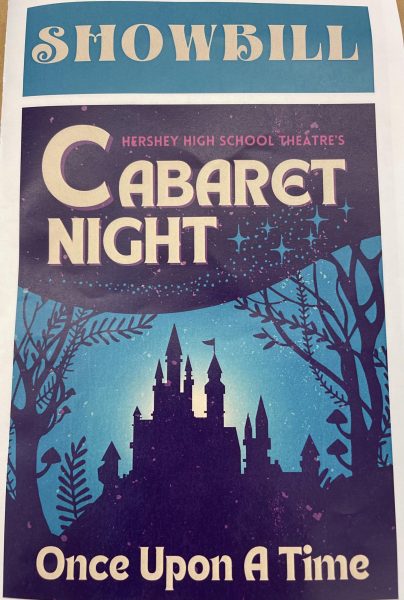Counselors caution those watching “13 Reasons Why”
May 26, 2017

The words “welcome to your tape” have shook the internet like no other.
13 Reasons Why is a Netflix series adaptation of the popular book by Jay Asher. The show follows teenagers suffering through the aftermath of the suicide of Hannah Baker while listening to the tapes she left behind explaining why she killed herself. Millions of teenagers are binging this show, and experts are now saying this could be damaging to their mental health.
Just from the first episode of the show, health experts started seeing a problem. School psychologist Dr. David Lillenstein said that from beginning, he was able to see why there was concern surrounding the series, but he could also see why so many people were obsessed with it.
“Inside I was getting a bit angry about the series,” he said, “at the same time the series got me hooked.”
Amanda Peters, a school psychologist, said her first impressions were ones of anger at the show for not dipping into Baker’s mental health history.
“They don’t follow Hannah Baker from a mental health concern,” she said, “most individuals that commit suicide have significant mental illnesses.”
The lack of detail about Baker’s mental health is one of the biggest red flags surrounding the show. However, there is also a misconception surrounding the cause of suicide that the show inaccurately depicts.
The tapes that are the backbone of the show express that Baker’s suicide was one hundred percent the survivors’ fault. However, psychologist David Furjanic said that the message that a suicide should be blamed on the peers of the victim is one to be cautious of.
“There’s this feeling that although all of these bad things has happened to Hannah, she is now winning and getting back at these people,” he said, “ but really at the end of the day, there’s been an irreversible solution to her situation.”
While the show did depict her former friends as victims, it also gave the strong message that Baker was alone. Each episode showed her losing friends and losing support until it ultimately ended in her death.
Mental health experts were extremely disappointed in the lack of professional health Baker was offered. Guidance counselors were mocked and laughed at instead of showing how they were there to help. They were made to look like a joke when really they have such a pivotal and important role in this type of situation.
“What message is that sending to kids who are watching the show?” said Peters. “Don’t bother going to your counselor because they’re just a joke and they’re not going to be any help.”
The common theme for the average consumer watching the show is that it’s very dark and, at some points, hard to watch. Peters even said that the ending of the show crossed a boundary.
“I found it to be very heavy, very dark, there were times where I was emotionally impacted by the show to the point of almost being anxious,” she said, “the end of the series is really challenging to get through.”
Baker’s suicide at the end of the show is really what has driven professionals to preach caution about the show. The suicide is very graphic and has proven to be triggering to those suffering through suicidal thoughts.
Mental health professionals are worried that teenagers will see Baker’s suicide and think that it’s the only option when suffering through depression or even a hard time. Lillenstein encouraged people to look at other options to treat their illness and stray away from the outcome presented in the series.
“They kind of present it as if suicide is the only option, which is so far from the truth,” he said, “suicide is not an option; not the only option”
One way to prevent students from seeing the negative messages in the show is to talk about it. Lillenstein said that watching this show in your bed at midnight is the worst way to take in the series.
“This is a series that needs to be watched with parents,” he said, “students have had these difficult conversations with their parents after watching the show, which has helped the students process it.”
13 Reasons Why has brought up the topic of suicide, and people are talking about the dangers of it now more than ever. However, psychologists warn that students need to be educated consumers when watching the show and know that those who feel alone or depressed do not have to take the path Baker took.

“Mental illness is treatable and suicide is preventable,” said Furjanic, “we have to be aware of the messages that it’s giving.”
Anyone who is suffering through mental illness needs to know that there is help out there, and guidance counselors and psychologists are available at your school to talk. The show’s message about mental illness is incomplete, and students need to be aware of this if they decide to discuss the series.
“I don’t think they’re seeing the positive intent, and I don’t think it’s there,” said Lillenstein, “I don’t think it’s loud enough.”
If you or someone you know is contemplating suicide, talk to a counselor or call the suicide hotline at 1-800-273-8255. Remember that it’s worth risking a friendship to save a life.




